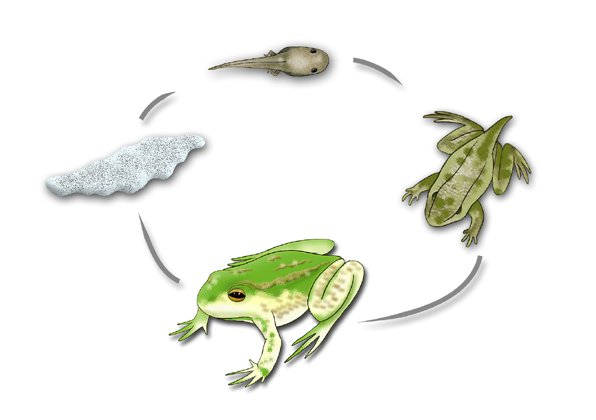Green and Golden Bell Frog Life cycle
Green and Golden Bell Frogs are amphibians. They have four stages in their life cycle: egg - tadpole - metamorph - adult.
Green and Golden Bell Frogs are amphibians. They have four stages in their life cycle: egg - tadpole - metamorph - adult.
Green and Golden Bell Frogs range from a dull olive to a bright emerald-green colour on their back. They also have gold markings on their back. They have a white or cream stripe down their side and a bright blue or blue-green colour inside their thigh. Their belly is white. Most are 3 - 8 cm long.
Green and Golden Bell Frogs live in eastern and south-eastern New South Wales. They are found among vegetation in or at the edges of ponds, dams and streams.
Green and Golden Bell Frogs eat insects, spiders, small lizards and snakes, and other frogs.
Birds, lizards, snakes, turtles, water rats and other frogs like to eat Green and Golden Bell Frogs.
Adult Green and Golden Bell Frogs breathe by inhaling air into their lungs. They can also absorb oxygen through their wet skin when they are out of the water. Tadpoles get oxygen from the water through their gills.
When Green and Golden Bell Frogs breed, the males use a mating call to attract females. The females lay jelly-like masses of eggs that sink into the water and two days later the tadpoles hatch out.
The Green and Golden Bell Frog is endangered in New South Wales. One of the few places it has been found is at Homebush where the Olympic Games were held.
Support our education programs
Your donation will help our educators develop new and engaging education programs for the next generation.
Make a donation

